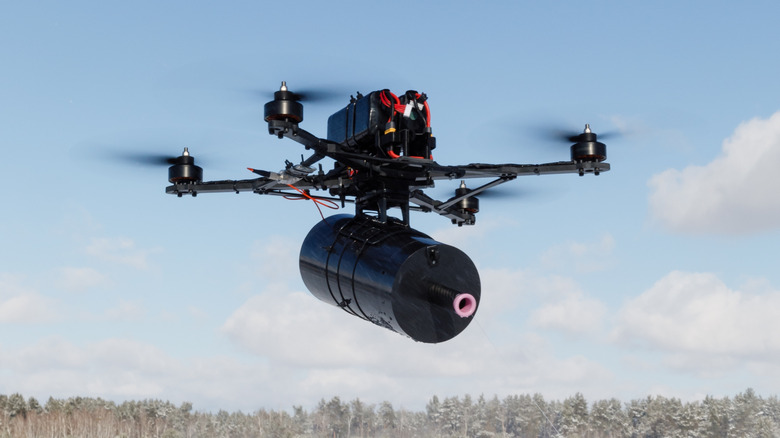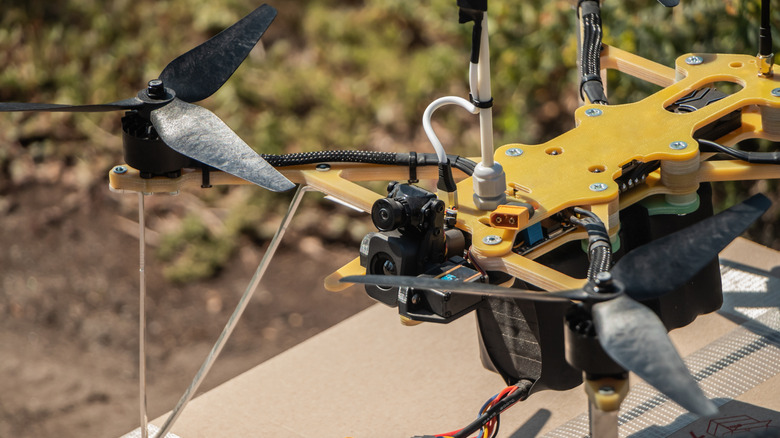
They started out as simple, inexpensive, compact, and easy to fly gadgets but over time, some drones used by the military have carved out a much bigger role than anyone expected. Built from everyday parts and flown with surprising ease, these drones, known as First Person View, or FPV, have become a serious threat on modern battlefields, especially to the kinds of weapons that once seemed untouchable.
FPV drones are controlled remotely by a pilot who can see everything the drone sees and while they
cost as little as $3,000, they are actually responsible for incapacitating significantly more expensive tanks. The FPVs receive a tank's location from a reconnaissance drone, then target and attack the tank, taking out their wheels or tracks. This blitz forces the crew to bail out, leaving the tank vulnerable to large bomber drones. The bombers swoop in to finish the job, reducing the tank to a smoldering heap of scrap metal. When this strategy works as planned, it turns one of the most intimidating vehicles in a military into little more than a scrap heap.
During Russia's 2022 invasion of Ukraine, Ukraine used FPV loitering munitions to change the battlefield. Ukraine's tactics proved so effective that drone production exploded to meet demand and as of early 2025, the country was manufacturing around 200,000 FPVs every month, a staggering tenfold increase from just a year earlier.
Read more: 10 Terrifying War Drones That Give Us Chills
Even With Their Flaws, FPV Drones Are Here To Stay

Despite their growing role on the battlefield, First Person View drones come with serious trade-offs. Most of them are single-use, meaning once they're deployed, they're not coming back. Their short range and relatively slow speed make them easy targets for jamming or signal interference. They're especially vulnerable to electronic countermeasures. While they are effective, they struggle to make an impact against heavily fortified positions or advanced air defenses. Compared to weapons like the Taurus cruise missiles or high-end combat drones, FPVs are also far less durable and far more limited in what they can strike.
However, FPVs are becoming a focus of the U.S. military, thanks to the experimental wargame known as the Technology Readiness Experimentation, or T-REX. Drone pilots will face off in real-time air combat drills, testing their skills against advanced anti-drone defenses. It's modeled loosely on the U.S. Navy's famous Topgun fighter pilot school, with a format that pits offensive teams against defenders in high-pressure scenarios.
The idea is to train operators to outmaneuver jamming, spoofing, and other modern countermeasures, while stress-testing new tech in a setting that mimics real-world combat. This initiative is part of a larger military shift toward faster, more flexible development. T-REX doesn't just test the FPVs, but the entire system that supports them, including sensors, software, human decision-making, and artificial intelligence. The program aims to ultimately turn affordable, disposable tech into a real strategic advantage.
Want the latest in tech and auto trends? Subscribe to our free newsletter for the latest headlines, expert guides, and how-to tips, one email at a time.
Read the original article on SlashGear.













